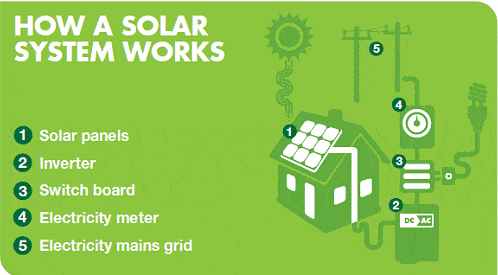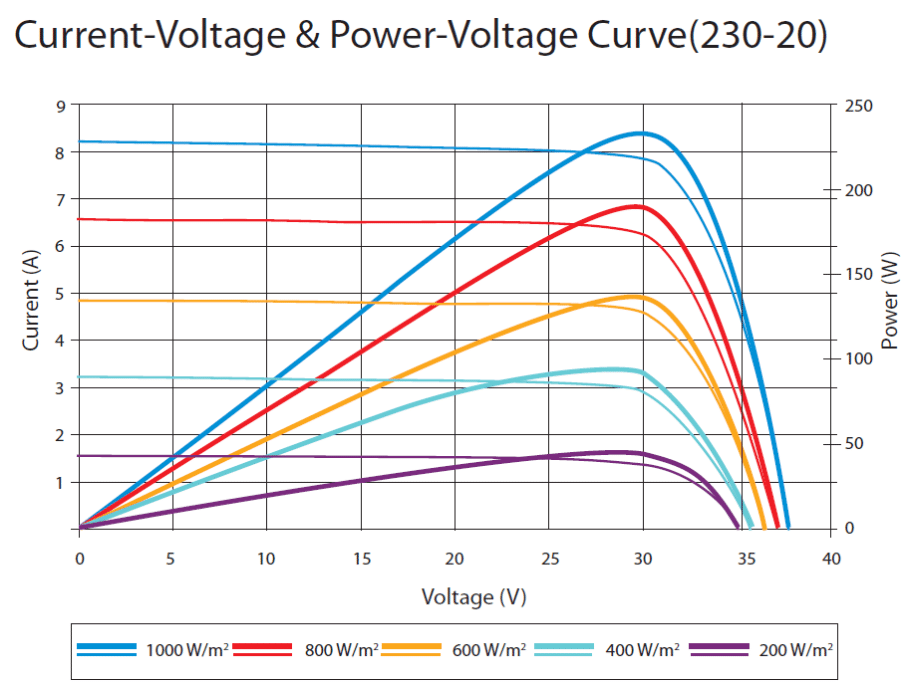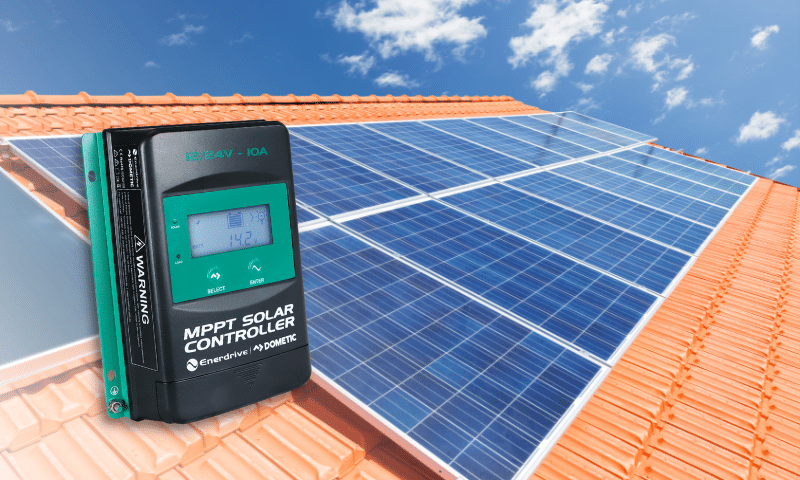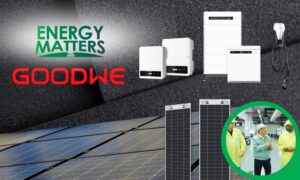Maximum Power Point Tracking (MPPT) greatly increases the capacity of your solar panels. To understand MPPT thoroughly, you must learn how solar PV systems works, especially solar panels.
Here is a summary of how a solar PV system works.

- The sun shines on the solar panels generating DC electricity
- The DC electricity is fed into a solar inverter that converts it to 240V 50Hz AC electricity.
- The 240V AC electricity is used to power appliances in your home.
- Surplus electricity is fed back into the main grid.
When the solar cells of your solar PV system are not producing power during the night or on cloudy days, electricity is drawn from the main grid to power your home.
A solar panel, also known as a PV panel, is a group of PV cells enclosed for safety and to allow the voltage generated by each solar cell to be combined. Solar panels are designed and installed to resist challenging and ever-changing weather conditions, even in situations with a lot of snow, rain, and wind.
A solar PV system comprises an “array”—a collection of connected solar panels. The solar inverter, which converts the electricity from the direct current (DC) generated by the solar panels to the alternating current (AC) utilised by the utility grid, is linked to the solar array.
The solar inverter converts the electricity produced by the solar panels into 240V AC electricity, which can then be used by the household, exported to the grid, or stored in a solar battery storage system.
If you want to install a solar PV system, why not begin your journey with 3 FREE quotes! Click this link and follow the prompts to receive your free quotes. The Solar Quotes quiz also covers other renewables, so get clicking today!
Solar Inverter vs Solar Charge Controller
If you have a solar battery, an added device known as a solar charge controller will be a part of the solar inverter. A solar charge controller controls the voltage and current to prevent overcharging solar batteries.
Solar panels can be connected directly to the solar inverter. Your solar arrays need a proper and high-quality solar power inverter. It’s a crucial link between the solar battery and the grid where solar panels are connected.
MPPT charge controller vs MPPT inverter
A maximum power point tracking (MPPT) charge controller converts the high voltage direct current (DC) output from the solar panels into a DC voltage that can be used to power the battery bank you are using. In contrast, an MPPT inverter converts the high voltage DC output from the solar panels to the required desirable alternating current (AC) mains voltage.
A circuit’s current flow can take two forms: alternating current (AC) or direct current (DC). Electric charge (current) only flows in one direction with direct current (DC). On the other hand, alternating current (AC) periodically alters the direction of electric charge.
So what is maximum power point tracking? What is MPPT in a solar inverter?
MPPT is generally built into the solar inverter in grid-tied solar PV systems so that it may assess and maximise the electricity produced by the solar panels. Maximum power point tracking is digital – an electronic tracking.
The connection between the electric current that flows through a circuit or PV device and the corresponding voltage, or potential difference, is displayed on a current voltage (IV) curve. On which a current is “I” and voltage stands for “V”.
The maximum power point (MPP) is the location on the IV curve that generates the most energy. The peak of the current voltage(IV) curve corresponds to the maximum power point (MPP) of a solar panel. As you can see on the graph below, the voltage generated by the solar panel will constantly change throughout the day. Here is a Suntech panel’s IV curve.

The thick blue line in this graph shows the power at a specific voltage. The thick blue line’s peak reveals that the MPP at 1000 W/m2 is approximately 30 V and that the maximum power appears to be around 230 W. Instead of needing to compute it from the voltage and current based on the thin blue curve, you may read that power straight from the peak of the thick blue curve.
The graph also shows that the voltage varies far less with changing sunlight than the current, but the current changes linearly with solar intensity. The power output from a solar panel is also influenced by temperature; whereas voltage declines as temperature rises, current somewhat increases. When using large string arrays, voltage calculations must be considered because the temperature has a more significant impact on voltage than on current. This is necessary to guarantee that the solar PV system satisfies the solar inverter’s requirements.
Most solar inverters offer a single maximum power point is effective when all the panels are angled and pointing in the same direction. However, a single MPPT solar inverter isn’t a realistic choice if the solar installation is on two distinct areas of a roof and the two solar arrays are facing opposite directions. The reason is that it can’t optimise the current/voltage mix for the two different conditions. A dual maximum power point MPPT solar inverter is frequently a better choice in this situation. Each of the two arrays would have its maximum power point MPPT that would independently optimise the groups as they reached the inverter. Residential installations are increasingly more likely to be like this.
What is maximum power point tracking in a solar charge controller?
The solar battery voltage is compared to the output of the solar panels by the solar charge controller. The maximum power the solar panel can provide to charge the battery is then determined. It takes this and converts it to the best voltage to get the most amps into the solar battery. Assume that your battery is 12 volts low. An MPPT converts the 17.6 volts at 7.4 amps to 10.8 amps at 12 volts, which the battery now receives. You currently own nearly 130 watts.
When the extra power is most needed, such as during the winter or on cloudy or hazy days, MPPTs work perfectly.
- Low battery charge is another situation where extra power is most necessary: The lower the state of charge in your battery, the more current an MPPT puts into them. Both of these situations may coincide with you.
- Cold weather: Solar panels perform better in colder temperatures, but you lose most of that without an MPPT. Winter is when cold weather is more likely to occur since fewer hours of sunlight and a greater need for electricity to replenish batteries.
- Long wire runs: If your solar panels are 100 feet away from a 12-volt battery that needs to be charged, the voltage drop and power loss could be significant without extensive wire. That might be very pricey. However, the power loss is significantly reduced if four 12 volt panels are connected in series to create 48 volts, and the controller will reduce that high voltage to 12 volts at the battery. This also implies that you can utilise considerably lesser cable if your controller is fed by a high voltage panel configuration.
Benefits of maximum power point tracking (MPPT)
Maximum power point tracking enables your solar panels to operate efficiently, providing more renewable electricity. Your solar installation’s output would be significantly less if MPPT weren’t used. Maximum power point tracking speeds up your return on investment and increases the cost-effectiveness of your system. The current to the solar battery is often increased by 25% to 30% through maximum power point tracking. It’s crucial to remember that a solar battery will recharge more quickly at 80% discharge than at 50% discharge. This happens because the solar battery’s voltage decreases when it begins to discharge. Most households probably aren’t even aware they have maximum power point tracking (MPPT) in PV solar systems, but they notice the benefit daily.













































